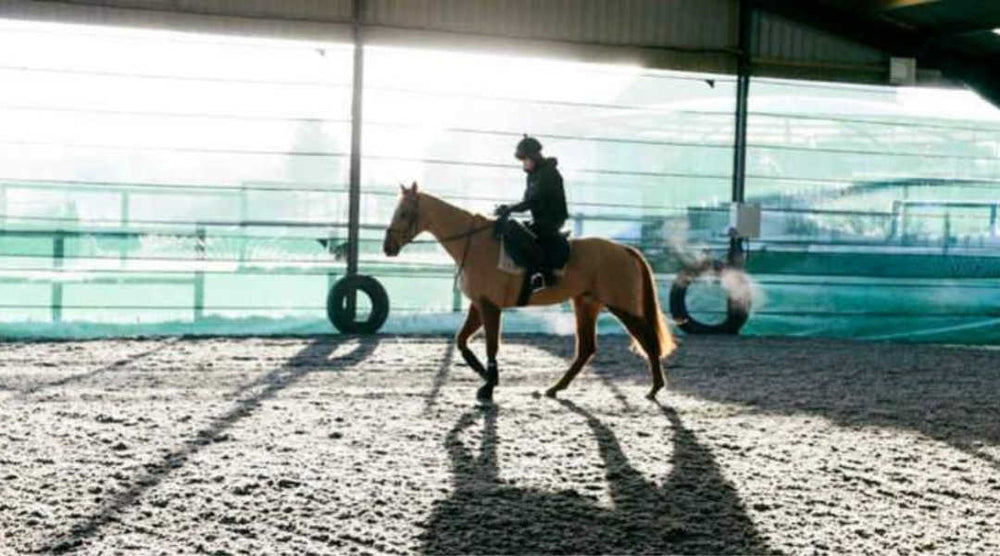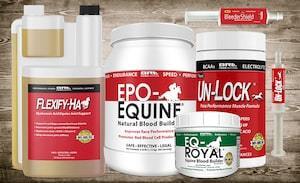
If you’re training up a performance horse, then wintertime equine exercise is a must. But no matter how determined you are to fit in a ride, if your ring’s footing is frozen then you may do more harm than good. Prevention is key, and the following strategies can help you to keep your footing safe and usable even in the frostiest winter temperatures.
Implement Drainage Solutions
Proper drainage is an obvious way to keep an outdoor ring from freezing, since the water in your footing is what causes it to freeze together. Drainage starts with your ring’s location: If you position your ring in an area where the surrounding land slopes down to the ring, you’ll always be fighting drainage issues. Instead, try to locate your ring on higher ground, where you won’t have to deal with water runoff.
The construction of the ring will also affect its drainage capabilities. You’ll need to carefully select a base that not only offers the right foundation for your footing, but that is also capable of draining away large amounts of water (depending on your climate). Proper grading will help to direct water out to the sides of the ring, rather than letting it pool in the middle or corners.
If an existing ring has drainage issues, you can fix them with a number of different techniques. Installing French drains around the outside of the ring can help to channel water away. Some barn owners also opt to install Geotextile fabric underneath their footing to further help with drainage.
Use Magnesium Chloride
For indoor arenas, magnesium chloride can help prevent freezing by pulling moisture from the air and footing and reducing the temperature at which your footing will start to freeze. Magnesium chloride is affordable and fairly easy to use, but water will wash it away so it won't solve outdoor drainage problems.
You should be aware that magnesium chloride can dry out your horse’s hooves, so it’s a good idea to wipe them off after a workout.
Drag Footing Frequently
Stay disciplined about dragging your ring footing, especially in the winter. Regular dragging can help to promote proper drainage, while also breaking up any footing that may be beginning to freeze. Try to drag your arena weekly at a minimum; higher-use arenas will need more frequent dragging. It’s best to drag your arena before the ruts from horse traffic around the rail occur.
Add Rubber or Fibers to the Footing
If your current arena footing isn’t ideal, you can improve it with additives. Adding crumb rubber or fibers to footing can help to reduce frequency of freezing. Plus, these additives can enhance your footing without the expense of needing to replace it.
Wintertime Equine Exercise
Keeping your performance horse fit in the winter can be a challenge, especially if you live in a location that experiences harsh winter weather. Feeding your horse Un-Lock can help speed recovery and make wintertime workouts better for your horse.
Learn more about Un-Lock and what it can do for your horse today.
Top trainers, owners and competitors rely on BRL Equine products to help their horses perform at their very best. You can get the same great results! Our all-natural equine nutritional supplements really work... guaranteed or your money back!





Also in Horse Tips and More
Top 10 Ways to Show Your Horse You’re Thankful For Him
November 01, 2021
View full article →
5 Ways to Prepare Your Barn For Summer
May 03, 2021
View full article →
Your New Spring Horse Health Checklist
March 12, 2021
View full article →